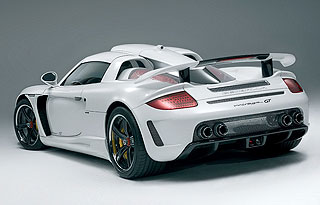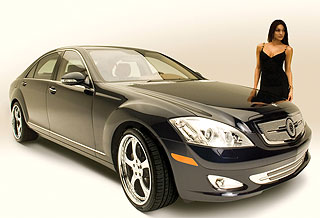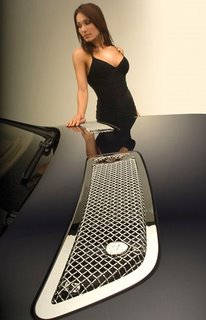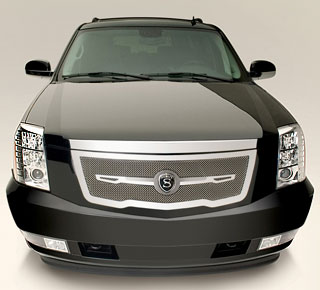
Italian automaker Fiat today finally launched the long awaited Fiat Bravo. The 2007 Fiat Bravo is replacing the company’s big flop, the Stilo. The car is a five-door hatchback with various engine sizes. The 1.9 liter Multijet produces 120 and 150 horsepower, the 1.4 liter produces 90 horsepower and the 1.4 liter turbocharged T-JET engine produces 120 and 150 horsepower as well.
The new Fiat Bravo aims to become the benchmark for what is the most important segment of the European market, which accounted for over 3,400,000 cars sold in 2006, or little more than one fifth of the total market.
The 2007 Fiat Bravo will be built at the plant in Piedimonte S. Germano (Frosinone) and its 3500 employees are preparing themselves enthusiastically to turn out an average of 120,000 cars a year, which will be marketed in 55 countries around the world, starting in 2007.
Video: Fiat Bravo Exterior:
Video: Fiat Bravo in Action:
Press Release
31/01/2007
Fiat Bravo
The model in brief
When Beauty encounters Substance
The new Fiat Bravo is a perfect balance of Beauty and Substance, another milestone in the process to update the brand’s product range. This extraordinary period of change is symbolised by the new logo that makes its debut on the front of this new model, with which Fiat will tackle the challenges of the future, without turning its back on its past century of history. This essential sign, full of references to tradition, was created to express ‘change in continuity’, and to represent from a modern viewpoint a human and technological heritage that few of the world’s carmakers can boast. Historical identity and state-of-the-art engineering skills, pride in its past and a renewed determination to innovate: this is the context in which the new Fiat Bravo was developed, a beautiful well-built Italian hatchback, which is agile, entertaining to drive, and competitive, thanks to the excellent balance between content and price. The new Fiat Bravo is ‘concrete beauty’, a car that reiterates the aesthetic canons of Italian styling tradition. It was designed to give customers the substance that comes from outstanding safety and reliability, coupled with the enjoyable, sporty driving style that the whole world expects from an Italian car.
The new model was presented in the spectacular setting of the Stadium of Marble in Rome, the Eternal City, in one of the most important examples of Neoclassical architecture. This beautiful stadium, which is inside the Foro Italico, was built in the 1930s by Renato Ricci (1896-1956), who decided to decorate the stands with an array of statues in Greek style produced by young sculptors who were unknown at the time. The end result is an extraordinary stadium where each figure, sculpted in white marble, embodies the power of an athletic movement in a form of refined beauty. One of the characteristics of Neoclassical art was to reproduce reality by taking Beauty as the ideal of perfection and balance, not just copying nature but trying to grasp its intrinsic essence.
The decision was a pondered one, because the goal of this artistic movement, which developed in Europe between the late 19th and early 20th centuries, was to recover in a contemporary key the aesthetics, forms, noble materials, building techniques and artisan skills of Graeco-Roman tradition, the cradle of every subsequent artistic manifestation of Western culture: from literature to the theatre, music and architecture. The neoclassical artist did not improvise, but summed up tradition in every work, with exemplary control over his emotions, perfect mastery of his materials and a broad knowledge of history.
The choice of this site underlines an ideal parallel with the Bravo project. When they developed the project, the engineers, designers, technicians and marketing staff also set out to create a ‘new classic’: in the design, by references to the great Italian styling tradition; by respecting the ‘fundamentals’, such as the quality of the materials and the assembly, safety, and exploitability of space, and comfort, which have always decreed a car’s success; and finally, in the technological components and cutting edge engineering processes, including recourse to virtual development techniques that have made it possible to cut lead times and to check even the tiniest details related to quality and performance thousands of times.
Rigour and Love: the best way of creating a car
The launch is charged with other symbolism. The New Fiat Bravo project challenged accepted paradigms where the design and development of a new model are concerned, in terms of time and methodologies. This extraordinary result was achieved thanks to the rigorous integration of the best processes, and the application of the most advanced technologies, but above all the essential contribution of Fiat’s men and women, and the commitment, creativeness and love that they put into their work. To convey this immense undertaking, for the debut of the new Bravo, Fiat insisted on the extraordinary participation of the performers of ‘Le Cirque du Soleil’: a perfect organisation, but above all ‘the best artists in the world’, as the international press has described them. It is certainly one of the most extraordinary live performances on the planet.
‘Le Cirque du Soleil’ employs about 3000 people, and performers include numerous Olympic champions and former champions, who currently give life to 5 resident companies (all in the United States) and 6 touring companies that perform simultaneously all over the world, and are regularly sold out. The various shows share maniacal attention to the tiniest detail, because everything is done by hand and nothing is left to chance. It was the first time that ‘Le Cirque du Soleil’ has put on a performance in Italy designed specifically for a corporate event, in front of an audience of more than 6,000 journalists, dealers, suppliers and representatives of large client companies from 72 countries, plus 3000 children from Rome who attended the first night and enjoyed a magical dream come true.
The parallel with the Circus world is appropriate, because the circus is hard work, talent, and creativeness, preparation and dedication, professional skill and passion, coordination, collaboration and teamwork, dexterity and lightness, magic without tricks, a dream but not an illusion. Just like the project to develop a new car: months of hard work, involving hundreds of people, and a huge investment. A perfect mechanism, for a spectacle that leaves no space for pretence or for second chances. At the first turn of the key, everything must function perfectly, year in and year out, repeat after repeat.
‘Authentic Italian Beauty’
Designed by the Fiat Style Centre, the model sets out to attract the public with its uncluttered, smooth lines, which on one hand confirm Fiat’s determination to create a new ‘family feeling’, beginning with the Grande Punto, while on the other hand they reinvent the stylistic elements of the great Italian car-making tradition, without exaggeration or stylistic excesses: authentic beauty in other words, that is reassuring and easy to understand. The raked, forward windscreen, the drop-shaped headlights, the sporty grille that frames the new logo, and even the colour chosen for the launch campaign, known as Maranello Red, which is a clear tribute to the best-known symbol of Italian automotive excellence: Ferrari.
The new Fiat Bravo is born from this cultural and stylistic heritage, a five-door saloon with a sleek, aggressive line, which is refined and compact at the same time. It is 434 centimetres long, 179 cm wide, and 149 cm high, with a wheelbase of 260 cm, and a loading capacity of 400 litres that tops its class.
The beautiful ‘dress’ made by Fiat contains all the substance of a car built to surprise in the category that rules the European market, to convince a clientele that considers the cars of this class as a real investment, because they are the family’s main car. The Bravo aims to make the difference in terms of quality, comfort, practicality and the versatility of the interior. Anyone who gets into the car will immediately be aware of the quality leap that everyone at Fiat was determined to achieve. The refinement of the materials and the colour combinations, the solidity, attention to detail and painstaking assembly, all represent a new standard for Fiat and a benchmark for the market.
Innovation, reliability and quality
Substance also means performance, safety and technology.
The launch of the new Fiat Bravo is also an opportunity to present the new family of turbocharged T-JET petrol engines (120 and 150 bhp 1.4 Turbo), which combine fuel economy, low emissions and exceptional performance, and now join the popular range of Multijet common rail turbodiesels (1.9 litres delivering 120 and 150 bhp) and the 90 bhp 1.4 16v petrol engine.
Comfort is enhanced by the pinpoint steering and excellent roadholding, and the choice of two tried and tested suspension systems which have been suitably modified and updated: an independent MacPherson system at the front, and a semi-independent torsion axle with interconnected wheels at the rear.
The Fiat Bravo was designed to score maximum points in passive and active safety tests, thanks to several airbags (as many as 7), three-point seat-belts with pre-tensioners and load limiters, and five head-restraints. Another aspect of safety regards the ‘Pedestrian impact’, which was taken into account during the design of the chassis, designed to maximise the absorption of this type of impact. The new model also features the most sophisticated electronic systems to monitor the vehicle’s dynamic behaviour, such as ABS complete with EBD, the sophisticated ESP system with a Hill Holder, and ASR anti-slip regulation.
The Fiat Bravo embodies new technologies, not only where engineering is concerned, but also in the use of electronics at the service of comfort and well-being on board. The best example of this is the new generation of the ‘Blue&Me’ system, known as ‘Blue&Me Nav’. This technology, which is a Fiat Group exclusive, developed with Microsoft, combines the functions of the first generation with a highly efficient pictogram navigation system, and access to a series of telematic services, that convey the true spirit of Fiat: simple, useful and at the right price.
The ‘dual-zone’ automatic climate system, a choice of two radios with specific Hi-Fi systems, the large panoramic opening sunroof, Cruise Control, a rain sensor, parking sensors and foglights with a self-adaptive cornering function, complete the array of equipment to customise the car, and to make life on board a pleasure for every occupant.
And finally, to underline the generosity of this project, the Fiat Bravo range will be broad and comprehensive right from its launch, with a choice of 5 engines, 12 elegant liveries and 4 outfit levels (Active, Dynamic, Emotion and Sport), all designed to offer the customer outstanding value for money.
Made in Italy, Sold around the world
The new Fiat Bravo aims to become the benchmark for what is the most important segment of the European market, which accounted for over 3,400,000 cars sold in 2006, or little more than one fifth of the total market (a value that has been practically constant since 2000).
It is clearly a very interesting segment but one that is also highly competitive, with about 30 different models, from full-liners and premium European, Asian and American manufacturers. We should also underline that the largest grouping in the medium sized saloon category is made up of 2-box saloons or hatchbacks, which account for over 71% of sales. About 25% of total sales for this category are destined to the corporate market, where qualities such as residual value, operating costs, reliability and price are important considerations. But these are areas in which the Fiat Bravo will be one of the most competitive models on the market. With these expectations, the long-established plant in Piedimonte S. Germano (Frosinone) and its 3500 employees are preparing themselves enthusiastically to turn out an average of 120,000 cars a year, which will be marketed in 55 countries around the world, starting in 2007.
Source: Fiat



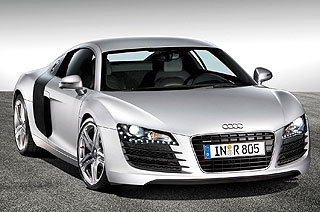
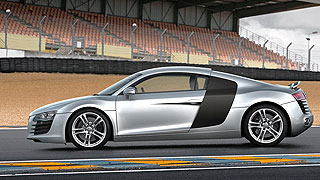


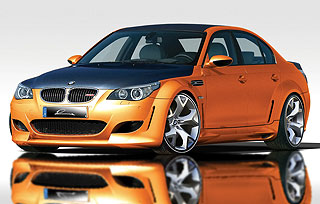
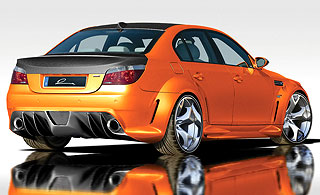

 Customers who purchase a Honda natural gas-powered vehicle continue to be eligible for single-occupant use of High Occupancy Vehicle (HOVs) lanes in California.
Customers who purchase a Honda natural gas-powered vehicle continue to be eligible for single-occupant use of High Occupancy Vehicle (HOVs) lanes in California.




